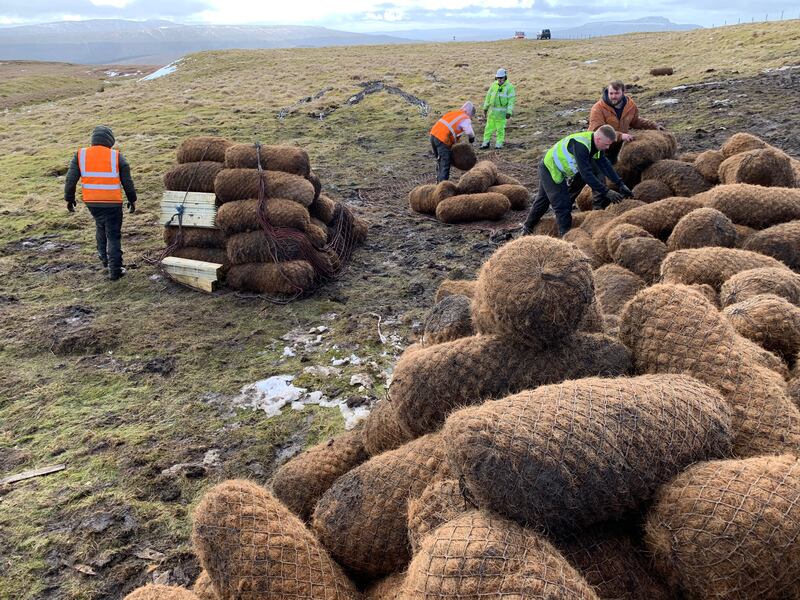When climate change threatened to destroy one of Britain’s beauty spots few people would have thought that coconuts from Sri Lanka would be its salvation.
But 9,000 kilometres away, in sun-drenched surroundings, an army of women are helping to save the planet through the use of coconuts.
Using coir, the coarse fibre extracted from coconut husk, the women hand weave it to create nets and logs which are now being used to protect the UK’s peatland by preventing huge amounts of carbon from being released into the atmosphere.
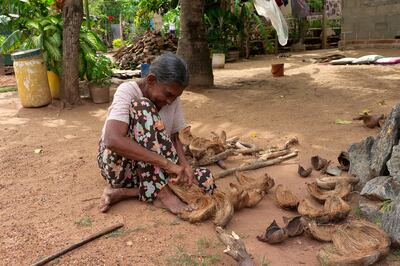
Three years ago the Yorkshire Dales peatland, which stores 38 million tonnes of carbon, reached crisis point as waters running off the hills started destroying vast quantities of peat.
That has led to polluting sediment entering the UK’s rivers, costing millions to clean, and critically the release of carbon from the damaged peat bogs.
With the UK containing 13 per cent of the world’s blanket bog, experts said urgent action was needed to combat its decay.
“Peat is essentially dead plants that have not decomposed fully,” Lyndon Marquis of the Yorkshire Peatland Partnership told The National.
“Because they have not broken down, the carbon from those once-living plants is trapped in the peat — we estimate that Yorkshire’s peatland stores 38 million tonnes of carbon.
“Bare, damaged peat is vulnerable to erosion by wind and rain. It’s vital that we restore our degraded peatland to keep that carbon locked up in the ground.”
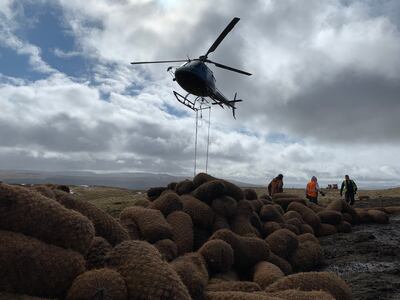
Peatland acts as a huge carbon store and, when healthy, is able to absorb carbon from the atmosphere, locking it away for thousands of years.
But damaged or degraded peatland actively leaks carbon, contributing to climate change.
It takes 1,000 years for a metre of peat to form and in one area of the Yorkshire Dales, at Fleet Moss, near Hawes, channels over 4m deep have appeared.
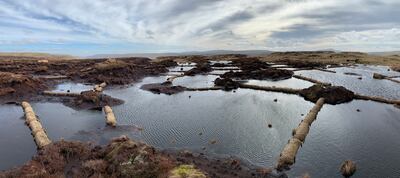
More than a quarter of England’s peat bogs are in Yorkshire. The Yorkshire Peatland Partnership estimates there are about 94,760 hectares of blanket bog in the region and that 80 per cent of it has been damaged.
Now helicopters are dropping coir logs on to the parkland in the ravaged areas.
The logs are then dug into the ground, providing a barrier to the water coming down off the hills and slowing the flow. The peat sediment is trapped, allowing vegetation to return.
'Unforgiving' weather creates microclimate over the peatland
When The National visited the peatland to see the restoration work first-hand, the damage across the moorlands was apparent, with gaping gullies that had once trapped vital carbon.
High up on a remote hillside, the rangers warned that every day the climate surrounding the peatland was “unforgiving” and from leaving a sultry summer's day a few miles away, the temperature can plummet to 3°C, with violent wind and rain.
Despite the damage being done by the continuous wild weather, the coir logs are helping.
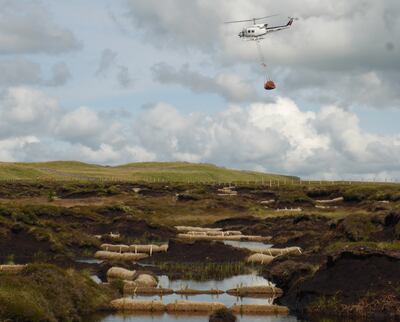
And, reassuringly, the effectiveness of the coir was visible, with sediment being prevented from moving and vital vegetation returning.
“The coir is vital in helping to protect the area,” Mr Marquis said.
“The water from here travels off the hills and leads to flooding more than 100km away in places such as York.
“In its current state, water runs off very quickly, especially during heavy rainfall events, which can lead to flooding further down the catchments. By restoring the peatland here, we can help to hold water on the hills for longer, mitigating flooding for communities downstream.”
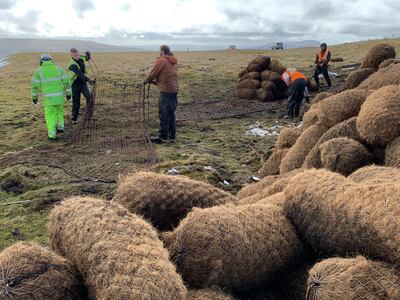
For the rangers, the work to protect the peatland is a mammoth task and every day workers are on site repairing the damage.
“The weather here is unforgiving and we have people on site every day of the year working to stem the water to protect the peatland,” Mr Marquis said.
One of those tasked with its protection is Jenny Sharman, a Peatland Restoration Officer at the Yorkshire Peatland Partnership.
It is her job to decide where the coir logs are placed and she has seen their effectiveness.
“I am blown away by the effectiveness of coir. We see the results almost immediately. It is very gratifying to see,” she told The National.
“We use it quite substantially across all our sites now. We started in 2018 and since then we have got quite a lot of experience of what works best.
“The flowing water destroys everything in its path. It is so important to have this because there is a massive amount of sediment washed down into the rivers from the peatland sites and it costs millions to clean the water.
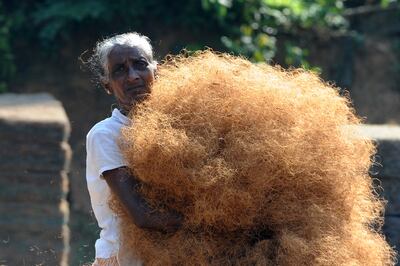
“It has a huge impact on society. As soon as the peat erodes vast amounts of carbon goes into the atmosphere and creates climate change. This work is vital to protecting the environment.”
The amount of carbon that currently comes off eroded peatland is estimated at 10 million tonnes per year in the UK.
UK firm Salix imports hundreds of tonnes of compressed coir fibre from Sri Lanka every year and makes it into logs at its centre in Norfolk.
“Coir was originally used on river beds to stop erosion of the banks and we have adapted it to suit peatland restoration,” Ms Sharman said.
“We work with Salix to develop the logs to our classification to be used on the site.
“It's amazing to think that there is an army of women in Sri Lanka gathering the coir and they are even using it to hand weave the sacks the coir goes into. Their work is beautiful.
“The work they are doing is helping us to save Yorkshire and is also having an impact on global climate change.”
In Sri Lanka, the Nagenahiru Foundation, a non-profit community organisation, has been training women in deprived areas to make products from coir.
Sri Lanka's coir now accounts for 16 per cent of the world’s total coir production and represents 40 per cent of the country’s exports.
Salix began working with one village after it was virtually wiped out during the 2004 tsunami and now supports hundreds of residents.
“We have developed a close relationship with a particular village in Sri Lanka, helping to support the local community and enabling us to sustainably import large quantities of high quality coir fibre,” said David Holland, Salix's technical director.
“The village was virtually wiped out during the 2004 tsunami and the local people are still rebuilding their community.
“Salix’s coir business supports the entire village of 400 people and allows higher than average earnings for those employed in the fibre processing.
“We are also proud to support the village by buying their hand-spun coir erosion control netting.”
Its coir comes from organically managed plantations and excess coir husk is returned to the soil as a natural fertiliser.
“It really is a true international effort to keep our peatland safe for the future,” Ms Sharman said.
